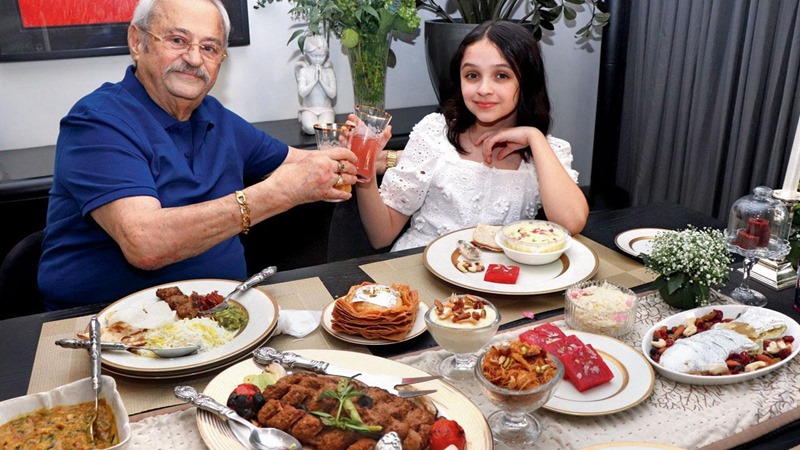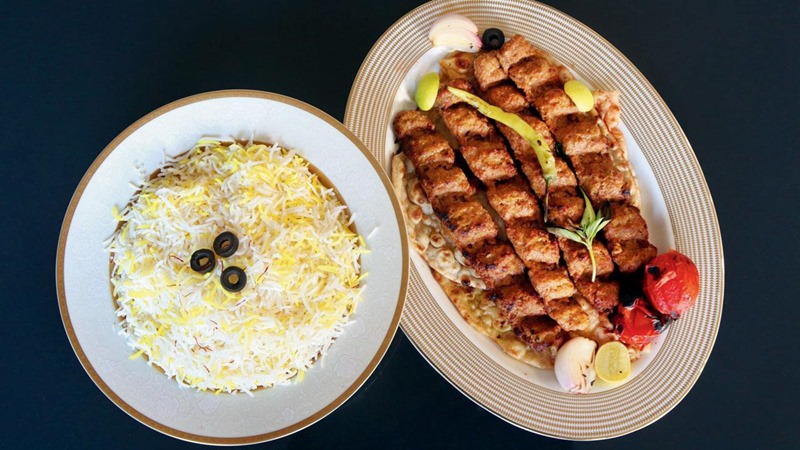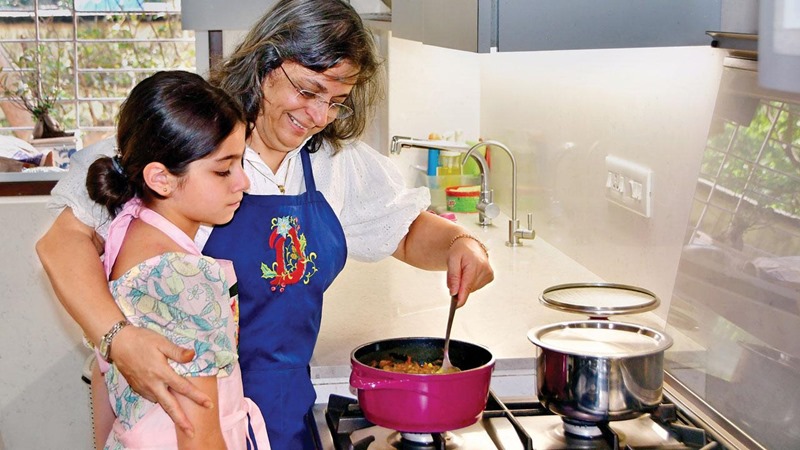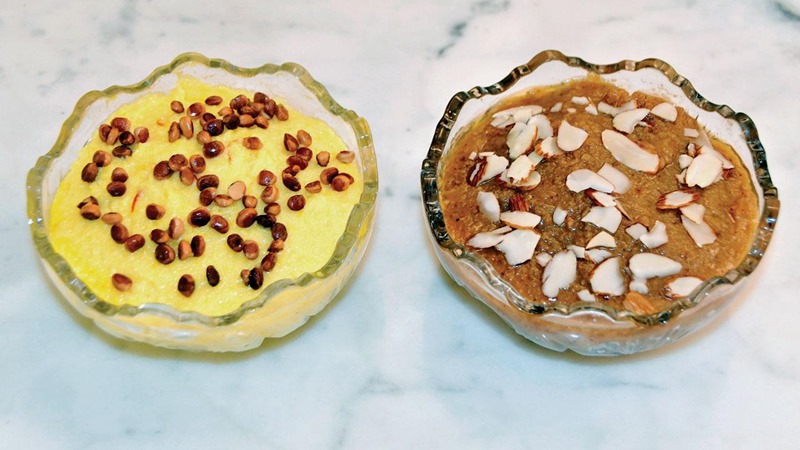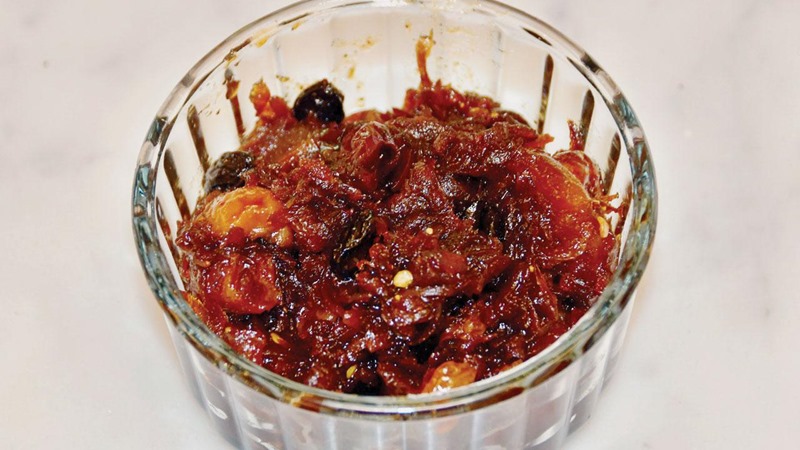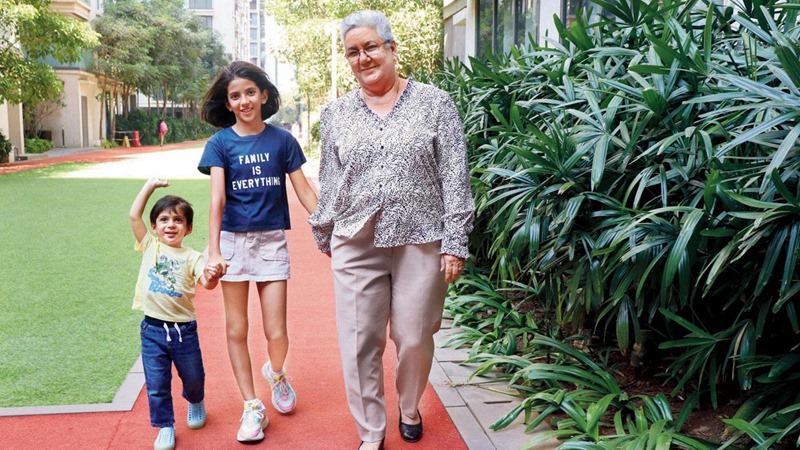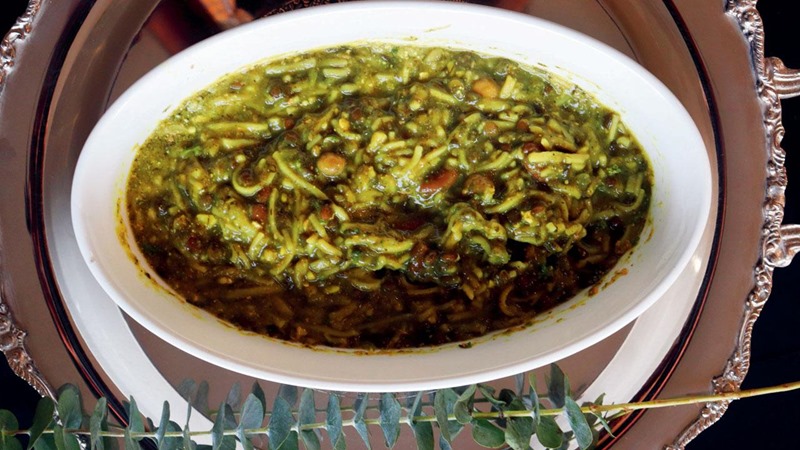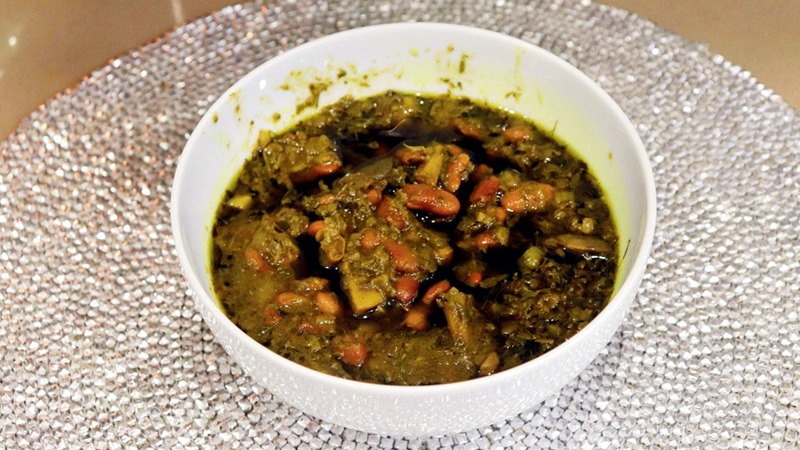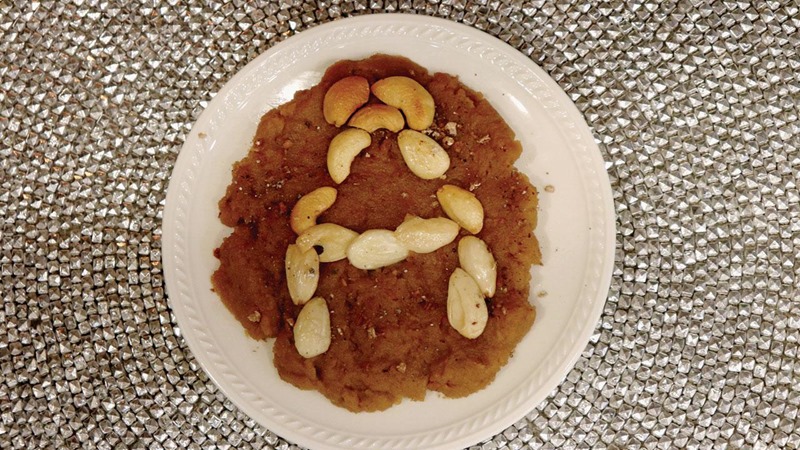Sunday Midday chronicles heartwarming Navroze traditions in Mumbai
Navroze, an ancient festival celebrating the spring equinox is the perfect time to share stories and culture with the next generation. Sunday mid day captures heartwarming moments between seniors and the next generation
Noshir Nadirshah Sanjana with granddaughter Gisele Suri at his residence
Article by Nasrin Modak Siddiqi |Mid Day
Growing up between Simla, Mumbai and Ahmedabad, on Navroze, 82-year-old author Noshir Sanjana’s father, Nadirshah, would carefully place a record on the turntable, and the room would fill with the crackly voices of legends. “We’d sing along, getting the words hilariously wrong and with complete confidence,” he laughs. “Those evenings stretched forever, filled with laughter, great food, and love spilling over a crowded family table. It’s that feeling that made every Navroze the sweetest,” he says, adding, “My mum and aunts’ gentle laughter echoed above the music, and we would gather around for impromptu dance lessons—our steps clumsy but full of joy.
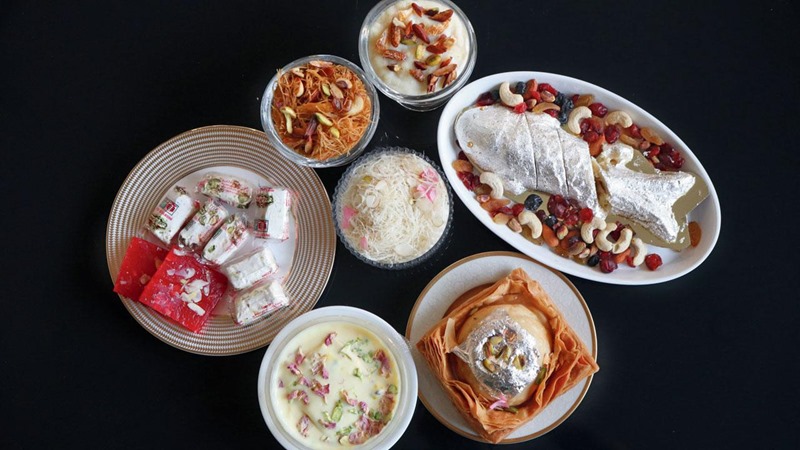
A spread of Noshir Sanjana’s favourite Parsi sweets including chikat halva, bread pudding, malai khaja, mawa ni boi, ravo, sev, sutarfeni, and gaz. Pics/Anurag Ahire
Sometimes, my mum, Jala, would pull out old family albums, whispering tales behind each faded photograph while I listened with rapt attention cuddled between my elder brother Rusi and sister, Lily. My uncles’ voices warm with laughter and perhaps a little too much beer, debated everything from cricket to politics. The room pulsed with life. That feeling of belonging, of being surrounded by the people who knew me best, amidst food, music and love was pure sweetness.”
Sanjana, who wrote Flying High—A Parsi Life of Gratitude, is fond of his 10-year-old granddaughter Gisele, with whom he shares all meals. Parsi-Irani food goes way beyond patra ni macchi, dhansak and berry pulao that have come to be synonymous with the community, as Sanjana shares, “There’s Bharuchi akuri, scrambled eggs with nuts and spices; gaur nu eedu, softly scrambled eggs with jaggery, that sounds strange but is so delicious; gaz, a nougat, with delicate flavours of rose and pistachio, like a taste of a Persian garden. Mawa ni boi, a fish-shaped sweet for good luck, always brings joy.
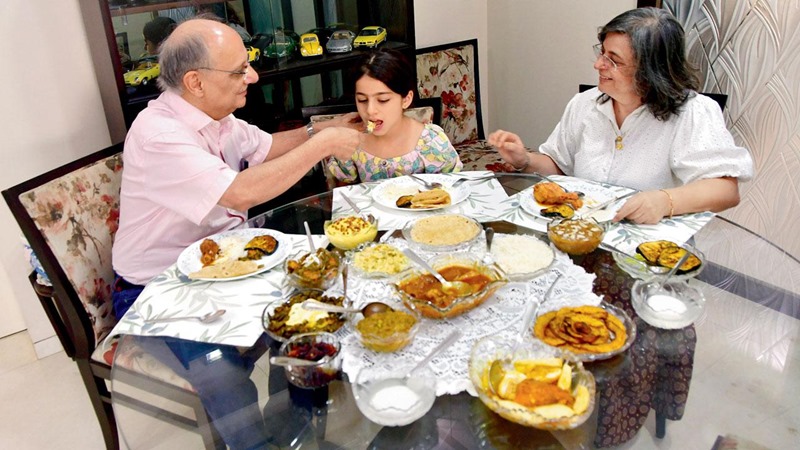
Beheram and Dinmeher Bunshah enjoy the company of their 10-year-old granddaughter Zoe Anklesaria who lives next door. The sixth-grader often gets in the kitchen with her grandmother, baking cakes, biscuits, shortbread, brownies and roulades
Orsu, the dry, salty balls of camel milk cheese, remind me of my grandfather’s tales of camel caravans crossing the desert. Our Parsi ravo: made by my mum, lovingly slow-stirred with the comforting aromas of charoli and almonds toasted in pure ghee. No Parsi celebration is complete without sutarfeni and those big jalebis from D. Damodar at Dadar. Irani kebabs and fluffy, chewy Iranian naan are a reminder of our ancient roots. Oash with mutton, a hearty soup, created by Iranian ladies to put together the leftovers is now a rare gourmet treat. Dhandar and kolmi no patio for lunch, washed down with beer makes for the perfect Parsi meal—a balance of sweet, sour, and spicy.”
Sanjana wants his grandchildren Kezia, Kayan and Gisele to know what makes their culture special is the warmth of family, the fun festivals, and the delicious flavours of food. “I want them to understand that Navroze is truly about sharing stories, being close to each other, making good memories, being kind, helping others, and always doing what’s right. I hope they learn all this and carry it in their hearts, just like Gisele does with her sweet, compassionate nature.”
Sanjana says that even as the world gets busier, that feeling of togetherness never goes away. “Sometimes, I miss how simple things used to be. We didn’t have much, but we had time for each other. If I could, I’d bring back those long days when all that mattered was laughing and sharing stories with family under one roof, and there was nothing to distract us. We didn’t need much, just the stories, the laughter, and the feeling of a close family. That’s what I miss the most,” he adds.
At Dadar Parsi Colony, couple Beheram and Dinmeher Bunshah are waiting for their 10-year-old granddaughter, Zoe Anklesaria, to return from vacation and join them for lunch. “School starts tomorrow,” says Dinmeher, who has laid out a spread of atheli murghi with potatoes and boiled egg, topli paneer, mutton ras chawal, bhida per eedu, Bharuchi akuri, vengna ni katri (brinjal fry) and kohra ni katri (pumpkin fry). “Parsis and Iranians are known for eating meat, but we love our veggies too,” she tells us. Dinmeher introduces us to the joys of simple meals with their family’s favourite being simple yellow dal and rice or the dhan dar patio. “We can have it daily. For festivals, we have an elaborate spread with palao dal,” she shares.
Regaling us with stories of the origin of Navroze, Beheram tells us that for him, it means the community getting together and having a jolly time. Period. “We love to enjoy. Iranians keep the Navroze table with 56 items for friends and relatives to enjoy. We see our faces in the mirror, sprinkle rosewater, and savour the food.” For Navroze, Iranians display various symbolic items on a large table with at least seven items whose names start with the Persian letter that looks similar to an ‘s’. Each item carries a meaning; for instance, coins for wealth, germinated wheat for fertility, etc.
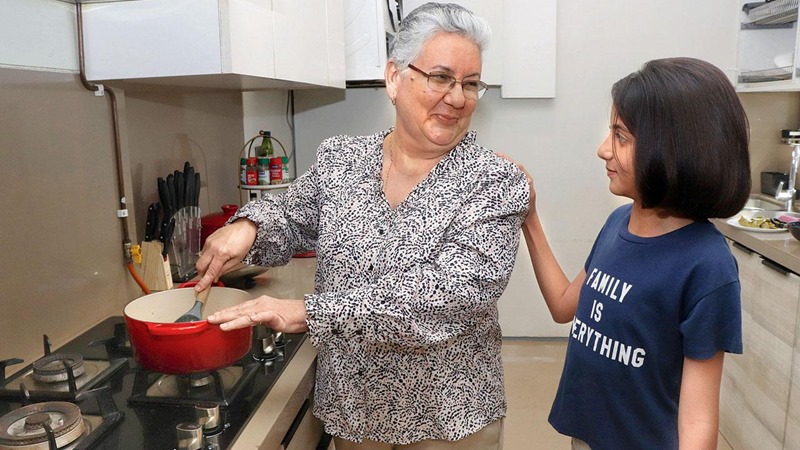
Gulbanoo P Irani and her 10-year-old granddaughter often bond over food as Bapai (paternal granny) makes Ava’s favourite food. The 2.5-year-old grandson, Zal loves to share a walk with the two in their apartment garden. Pic/Anurag Ahire
Dinmeher who hails from Kanpur, fondly remembers the community jashans held in the city as a part of their festive celebrations at the Byramji Nowroji Javeri Dar-e-Meher agiary that was established in 1930 and is the only functioning agiary in Uttar Pradesh. “We would greet each other, share the malida, and have a good time. That doesn’t happen here unless you get a personal jashan done. The Dasturji says a prayer and the fire is lit, followed by hearty meals.”
Behram tells us that the 41st Jamshedi Navroze gambhar will be held at the Dadar Parsi Colony Gymkhana grounds this year. “Started by Mithoo Jimi Jesia of the Mancherji Edalji Joshi Memorial Trust, the evening comprises felicitating the community and feasting with entertainment and performances by our community’s young talent, followed by dinner. I come from a lower middle-class family, so before this, only Irani homes celebrated Jamshedi Navroze or new year, but this gambhar makes it inclusive for all. There are the learning centers [formerly called madressas], which have been training Zoroastrian priests. There, we have Ramiyar Karanjia, who takes classes for small children, teaching them about Zoroastrianism through stories and prayers and readying them for their Navjote [thread ceremony],” he informs.
For 63-year-old Dahanu resident, Gulbanoo P Irani, Navroze, which marks the first day of Spring in the Northern hemisphere and is celebrated on the day of the astronomical vernal equinox, which usually occurs on March 21, is all about shedding off the past and beginning afresh. “Just like spring—new leaves and flowers blooming everywhere,” She tells Sunday mid-day, adding, “In my maternal home in Pune, we did not celebrate much. But after my marriage, I saw my first Navroze table, full of sweets, dry fruits and salads. Everything was new. We visit our family and friends and greet and spread joy on this occasion. At night, we get together and eat from the laid-out tables.”
In the past, it was tradition for grandparents to give their grandchildren gold and silver coins; now, money is given in an envelope that young and adults eagerly look forward to. Her favourite Iranian dishes which she loves to make for her grandkids Ava and Zal, are oash-e-meer, a hearty bean, lentil and noodle soup and oshe-e-berenj and sirog, a deep-fried flatbread with pista-elachi-sugar. “We make it on good occasions and distribute it to our family and friends. My children have been helping me lay my table, pray, etc., and I hope my grandchildren also follow and continue this tradition and the festival’s spirit remains unchanged.”

